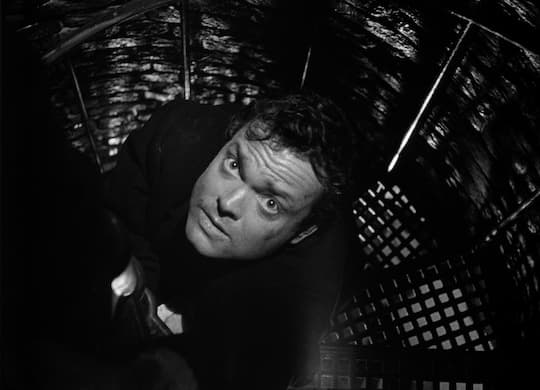Not Quite an Andy Warhol Moment, but Orson Welles Makes Great Use of His 10 Minutes in ‘The Third Man’
For the short time he’s on screen, Welles sends a jolt through the 1949 picture that has found itself on many best-of lists over the years. In the process, he proves himself as much of an actor as he was an auteur.

‘The Third Man’
Film Forum
December 29-January 4
Upon receiving notice that Film Forum would be hosting a one-week revival of “The Third Man” (1949), Carol Reed’s starkly configured opus about post-war Vienna and the boundaries of friendship, I did two things. First, I circled the dates on my calendar with a big red marker. Second, I began trawling the internet to see how well the picture has fared on the various “best of” lists that often seem to be the sole reason the film industry exists — at least, for some critics.
In 1999, the British Film Institute ranked “The Third Man” as the best British film of the 20th century. Not bad. Then again, BFI’s recent accounting of international cinema placed Reed’s picture a good 62 paces behind the interminable but presumably greatest movie of all time, “Jeanne Dielman, 23 Quai du Commerce, 1080 Bruxelles” (1975). The American Film Institute, likely poaching on a shared common tongue, posted “The Third Man” as among our country’s finest movies. The critic Roger Ebert wrote that the picture “most completely embodies the romance of going to the movies.”
“The Third Man” is a romantic movie, but the romance at the center of the story is its weak link. It doesn’t matter whether you consider the romance to be the abiding love professed by Anna Schmidt (Alida Valli) for the duplicitous Harry Lime (Orson Welles) or if it’s the drunken infatuation Anna tolerates at the behest of Lime’s best friend, Holly Martins (Joseph Cotten). Graham Greene’s lopsided screenplay, with its emphasis on suspenseful obfuscation and delayed gratification, doesn’t allow for much in the way of emotional resonance.
True believers will tell you that “The Third Man” is most notable as a “bromance” — that is to say, the bond between Lime and Martins or, given that they were close friends off-camera, Welles and Cotten. The plot stems from a down-at-the-heels Martins traveling to war-torn Vienna on the promise of a job in Lime’s employ. When he finds out that Lime was recently killed in a hit-and-run accident under murky circumstances, Martins starts poking his nose into situations that a more prudent soul would have left well enough alone.

Martins proceeds to wend his way through a city whose thoroughfares are vacant when they haven’t been reduced to rubble. How familiar was Reed with modern painting? The careening streets of Vienna and its foreboding architecture recall the distorted Surrealist dioramas of Giorgio de Chirico. The gallery of grotesques at the periphery of the plot could have stepped out of a painting by Otto Dix. And those steep and slanted angles? Expressionism, pure and simple.
Not everyone liked Reed’s canted camera placement. Upon the movie’s release, director William Wyler sent his friend Reed a carpenter’s level with an accompanying note that read, “Next time you make a picture, just put it on top of the camera, will you?”
There were few complaints about Robert Krasker’s cinematography. Krasker had worked with Reed on “Odd Man Out” (1947) and took home an Oscar for his efforts on “The Third Man.” The film is unthinkable without the sumptuous sense of space, light, and texture Krasker brought to it. The final chase through the sewers of Vienna is vivifying: The dramatic luster is undiminished. This is a beautiful movie to look at.
Then, of course, there’s Orson Welles. Although Welles proved contentious on the set, Reed yoked a remarkable performance from him, with all the requisite raffishness, smarm, and fleeting moments of murderous intent. For the short time he’s on screen, Welles sends a jolt through the movie and, in the process, proves himself as much of an actor as he was an auteur. We should all earn immortality in 10 minutes’ time.
Film Forum offers a splendid opportunity to reacquaint ourselves with the mercurial Mr. Lime, the dogged Mr. Martins, and a director whose mannerisms were an inspired counterpoint to the story at hand.

